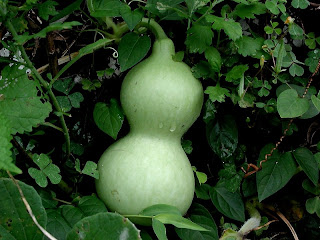Spinach (Spinacia oleracea) is an edible flowering plant in the family of Amaranthaceae. It is native to central and southwestern Asia. It is an annual plant (rarely biennial), which grows to a height of up to 30 cm. Spinach may survive over winter in temperate regions. The leaves are alternate, simple, ovate to triangular-based, very variable in size from about 2–30 cm long and 1–15 cm broad, with larger leaves at the base of the plant and small leaves higher on the flowering stem. The flowers are inconspicuous, yellow-green, 3–4 mm diameter, maturing into a small, hard, dry, lumpyfruit cluster 5–10 mm across containing several seeds.
Common spinach, Spinacia oleracea, was long considered to be in the Chenopodiaceae family, but in 2003, the Chenopodiaceae family was combined with the Amaranthaceae family under the family name 'Amaranthaceae' in the order Caryophyllales. Within the Amaranthaceae family, Amaranthoideae and Chenopodioideae are now subfamilies, for the amaranths and the chenopods, respectively.
ETYMOLOGY
The English word "spinach" dates to the late 14th century, and is from espinache (Fr. épinard), of uncertain origin. The traditional view derives it from O.Prov. espinarc, which perhaps is via Catalan espinac, from Andalusian Arabic asbinakh (اسبيناخ), from Arabic es-sabaanikh (السبانخ), from Persian اسپاناخ aspanakh, meaning roughly "green hand",[1] but the multiplicity of forms makes the theory doubtful.
Nutrition
Spinach has a high nutritional value and is extremely rich in antioxidants, especially when fresh, steamed, or quickly boiled. It is a rich source of vitamin A (and especially high in lutein), vitamin C, vitamin E, vitamin K, magnesium, manganese, folate, betaine, iron, vitamin B2, calcium, potassium, vitamin B6, folic acid, copper, protein, phosphorus, zinc, niacin, selenium and omega-3 fatty acids. Recently, opioid peptides called rubiscolins have also been found in spinach.
Polyglutamyl folate (vitamin B9 or folic acid) is a vital constituent of cells, and spinach is a good source of folic acid. Boiling spinach can more than halve the level of folate left in the spinach, but microwaving does not affect folate content. Vitamin B9 was first isolated from spinach in 1941.
[edit]Iron
Spinach, along with other green leafy vegetables, is considered to be a rich source of iron. For example, the United States Department of Agriculture states that a 180-g serving of boiled spinach contains 6.43 mg of iron, whereas a 170-g ground hamburger patty contains at most 4.42 mg. However, spinach contains iron absorption-inhibiting substances, including high levels of oxalate, which can bind to the iron to form ferrous oxalate and render much of the iron in spinach unusable by the body. In addition to preventing absorption and use, high levels of oxalates remove iron from the body. But some studies have found that the addition of oxalic acid to the diet may improve iron absorption in rats over a diet with spinach without additional oxalic acid.
The bioavailability of iron is dependent on its absorption, which is influenced by a number of factors. Iron enters the body in two forms: heme iron and nonheme iron. All of the iron in grains and vegetables, and about three-fifths of the iron in animal food sources (meats), is nonheme iron. The remaining portion from meats is heme iron.
[edit]Calcium
Spinach also has a high calcium content. However, the oxalate content in spinach also binds with calcium, decreasing its absorption. Calcium and zinc also limit iron absorption. The calcium in spinach is the least bioavailable of calcium sources. By way of comparison, the body can absorb about half of the calcium present in broccoli, yet only around 5% of the calcium in spinach.


_leaves_with_flowers_at_Kolkata_W_IMG_2125.jpg)











